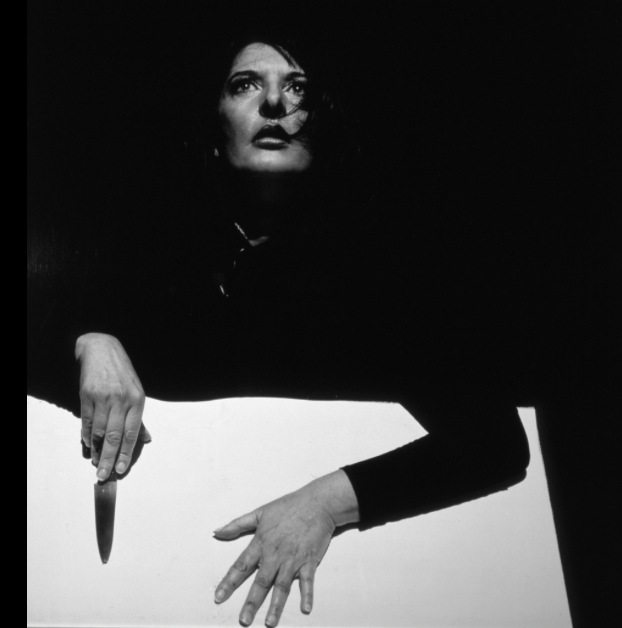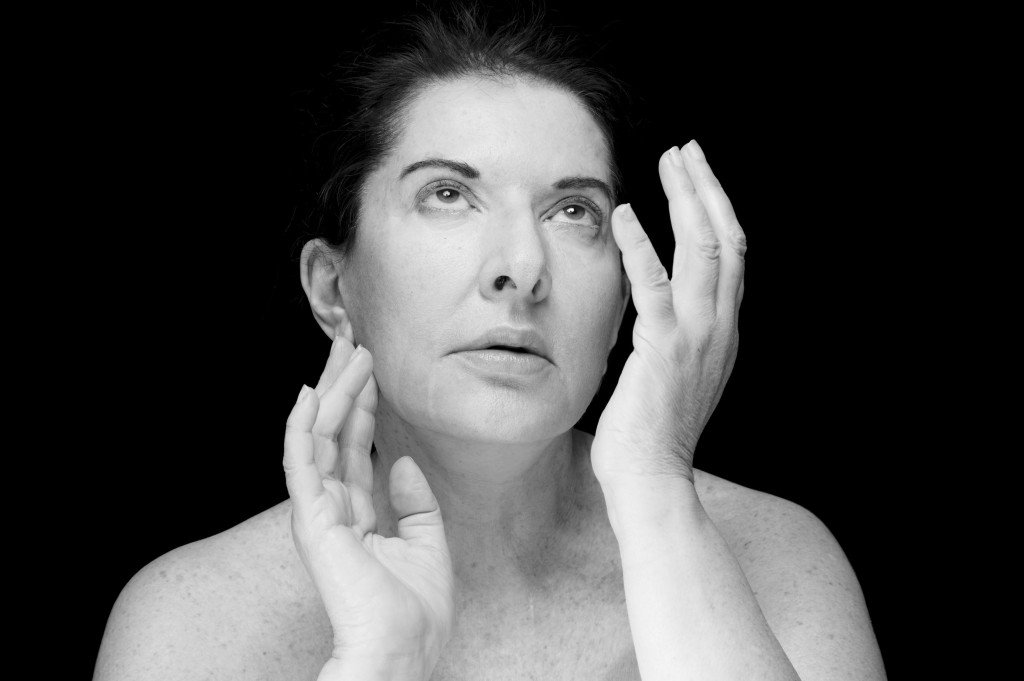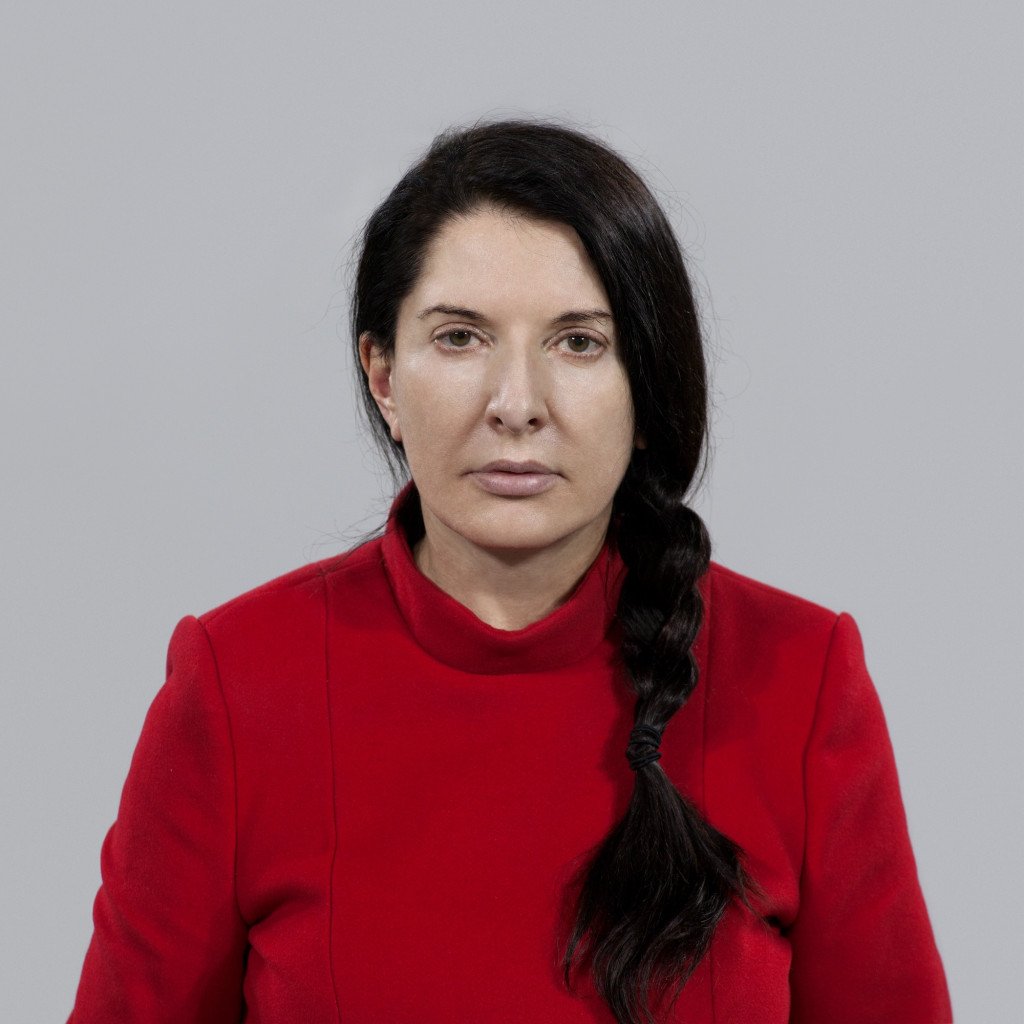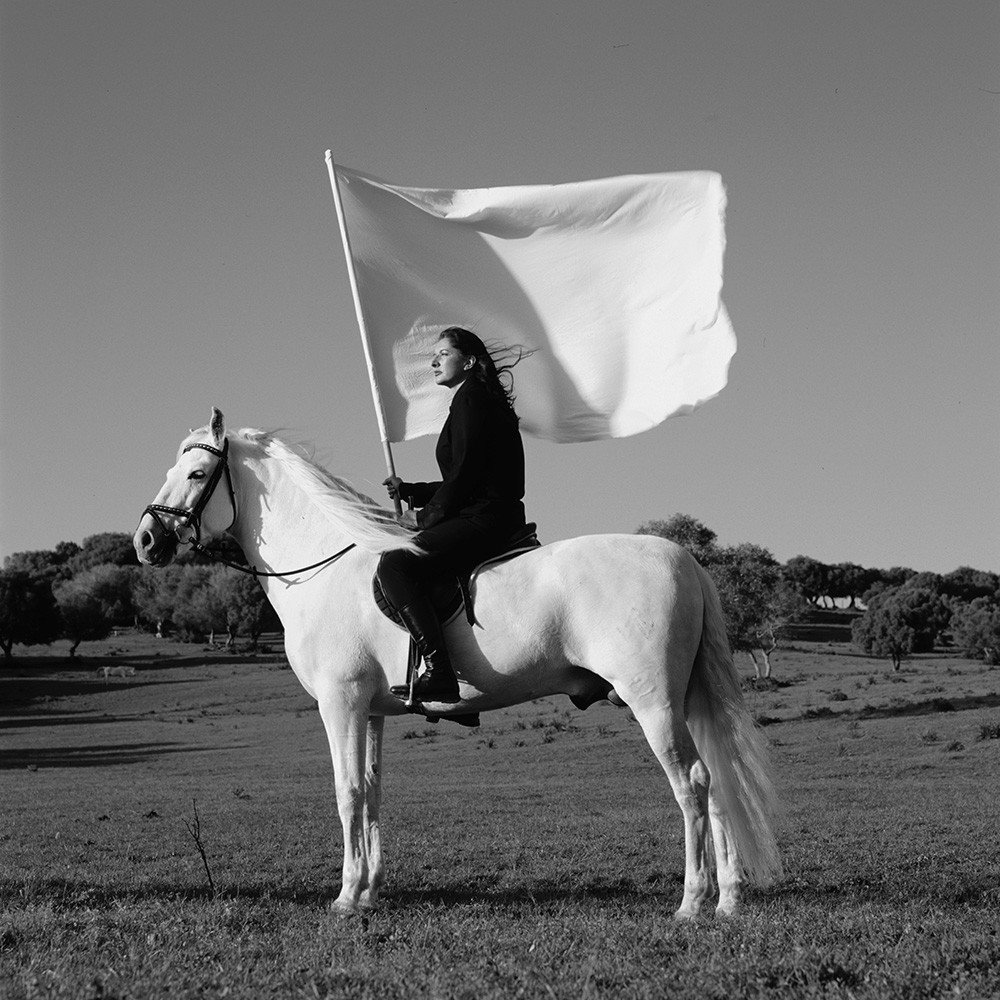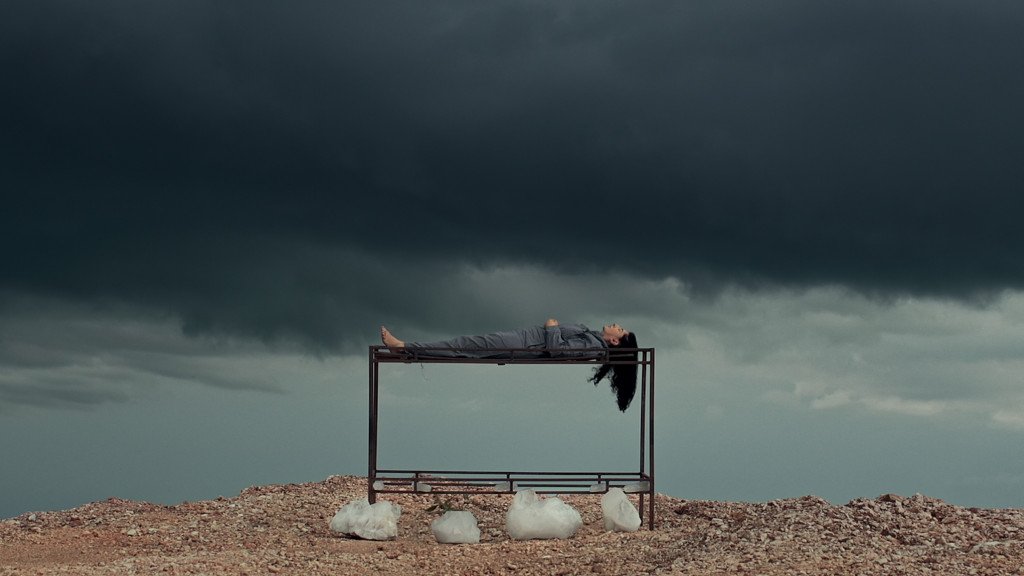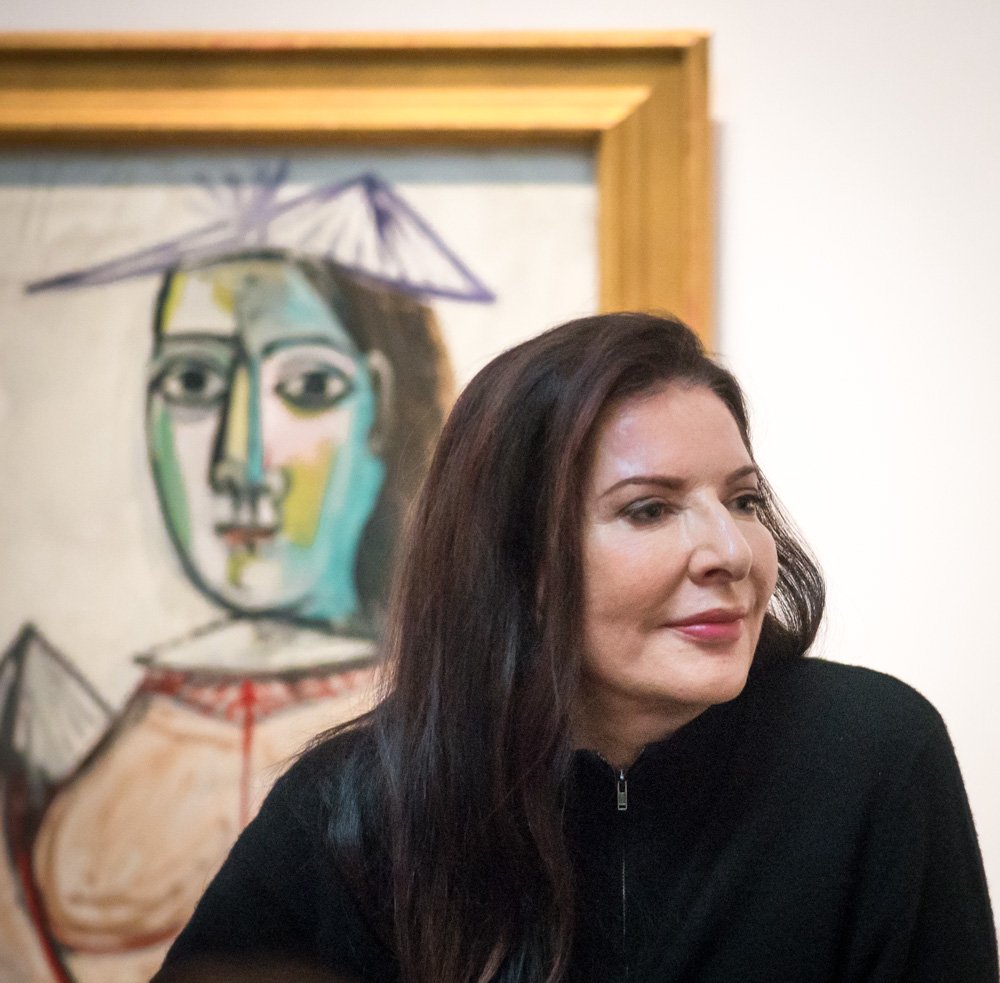Marina Abramovic: The Spiritual Roots Of Her Radical Art
Marina Abramović allowed visitors to meet her gaze in a 2010 exhibit in New York. (Photo courtesy of the Museum of Modern Art)
In 2010, at the Museum of Modern Art in New York, Marina Abramović sat in a chair for eight hours a day, six days a week, for three months, inviting exhibition-goers to sit opposite her and silently meet her gaze for as long as they wished.
Some people smiled, others showed no emotion; a few found the experience of intimately connecting with the Serbian performance artist so moving that they cried.
Titled “The Artist is Present,” the performance attracted a record-breaking 850,000 visitors and quickly became Abramović’s most famous work.
READ: Holy Land Treasures Go On World Tour
“There were days when I thought I could not continue. But I did it,” she recalled, describing it as a “supernatural” feat of endurance.
It was the culmination of a career spent exploring the spiritual practices of different religions, tribes and cultures across the globe. From Tibetan monks and Aboriginal Australians to Brazilian shamans and European mystics, she gleaned techniques that allowed her to access a higher state of consciousness used for this and many of her other often-grueling, endurance-based works.
Inspired by a variety of religious and mystical traditions, Abramović has spent the last 50 years pushing her body and mind to their limits in performances that have captivated audiences around the world.
This spring, one of the largest retrospectives of the artist’s work opens at The Stedelijk Museum in Amsterdam. With more than 60 key works on display, the exhibition will reveal how spirituality has been a consistent theme throughout her pioneering career. As she has said: “I think the base of real art is spirituality.”
Born in Belgrade in 1946 and raised under communism, Abramović initially trained as an academic painter, moving into the emerging field of performance art in the early 1970s. While the era’s radical political and artistic ideas were hugely influential on the young artist, so too was her devoutly religious grandmother, whose syncretistic blend of Serbian Orthodox Christianity, folk superstitions and clairvoyance left a lasting impact.
From the very start, Abramović placed her own body at the center of her work, subjecting herself to pain and risk.
In her first performance, “Rhythm 10” from 1973, she stabbed a knife between the splayed fingers of her left hand as fast as possible — changing the knife every time she cut herself.
More ritualistic was “Rhythm 5” a year later, where she constructed a five-pointed star from wood shavings soaked in gasoline, set fire to it, and sprinkled her own hair and toenail clippings into the flames as a kind of burnt offering.
She then lay down in the star, where she inadvertently lost consciousness and had to be dragged to safety.
“My hair was burning; I was burned everywhere,” she later recalled. “In the morning, my grandmother was in the kitchen making breakfast. She saw me and thought she saw the pure devil and threw everything on the floor and ran away.”
The pentagram appeared again in “Lips of Thomas” in 1975, a notoriously violent performance in which Abramović used broken glass and a razor blade to incise the symbol into her abdomen, before whipping herself like a flagellant and lying down on a cross made of ice.
Though her use of the star is suffused with magical and religious associations, many critics associated it with a critique of the communist ideology espoused by her overbearing parents. Given the prevalence of occult interest in European performance art in the 1970s, coupled with the subsequent trajectory of her practice, its significance also as a ritualistic symbol seems clear.
Abramović described the pain she endured during her early performances as a way of experiencing extreme mental clarity and presence, an elevated state of consciousness that she explored further after meeting fellow artist and partner of 12 years, Ulay (Frank Uwe Laysiepen), with whom she collaborated extensively.
The couple’s intense and passionate relationship resulted in powerful performances such as “Light/Dark” (1977), in which the pair slapped each other’s faces for 20 minutes, and “AAA-AAA” (1978), where they screamed at one another for a similar duration.
More risky was “Rest Energy” (1980), which involved Abramović holding an archer’s bow while Ulay pulled back the bowstring, the tip of the arrow pointing dangerously toward his partner. At the Stedelijk, these works are presented as videos, though the provocative “Imponderabilia” (1977), where the pair faced each other in a narrow doorway so that people passing through were forced to touch their naked bodies, is one of several performances being restaged for the exhibition by Abramović-trained performers.
Central to their artistic partnership was a shared interest in Buddhist spirituality, and for the time they were together they traveled extensively, studying spiritual and religious traditions around the world, especially among desert communities.
“Buddha went to the desert. Mohammed went to the desert. Moses went to the desert. Jesus Christ went to the desert. They all went as a nobody and came back as a somebody — so we were definitely thinking it had to be the desert,” Abramović said in a 2010 interview.
The couple visited the Thar Desert in India, the Sahara in Africa, the Gobi in China, and the Great Australian Desert, where they spent a year living with Aboriginal groups.
The various practices of stillness and energy concentration that Abramović encountered on her travels had a lasting influence on her work. After separating from Ulay in 1988, her performances became increasingly characterized by contemplation and meditation, challenging her body in long-duration works such as “The House with the Ocean View” (2002), where for 12 days she occupied Sean Kelly Gallery in New York, not eating or speaking. Each day of the performance visitors could watch her as she sat, slept, washed and drank, all to the beat of a hypnotic metronome.
The ritualizing of everyday activities was for her an act of purification inspired by the extreme practices of Tibetan monks; some of the lamas she met had spent years living in isolation, existing in a constant meditative state.
“Just being near them really changes your complete attitude,” Abramović said. “When you purify yourself, your energy pattern changes into a high frequency pattern, then everything around you also alters. The more you are in that kind of state the more people you can affect.”
In 2009, she made “The Levitation of Saint Therese, from The Kitchen,” a video performance in which she appears to levitate for just over eleven minutes in a black outfit reminiscent of a nun’s habit. The work was inspired by the memoirs of Saint Teresa of Ávila, a Carmelite nun and prominent Spanish mystic active during the Counter-Reformation known for her raptures and apparent levitations.
“One day she levitated many, many times in her church while praying to Jesus,” Abramović explained in 2010. “When she went home she was very hungry and wanted to make soup before taking a rest … but, in the middle of making this soup, she found that she could not control the divine power which took hold of her again.”
With spirituality so central to Abramović’s practice, the question of the artist’s own religious convictions naturally arises. Is she a Buddhist, or maybe a shaman? Perhaps a Christian mystic, a witch or even, as some have suggested, a straight-up Satanist?
“I don’t think she’s ever actually worshipped anything,” said James Westcott, Abramović’s biographer. “What she has done is graze world religions and esoteric spiritual practices as source material for experimental performances and as meditation tools to salve her bottomless emotional pain.”
At the core of her work, then, is a radical exploration of embodied experience.
For Westcott, Abramović “takes the spiritual and squeezes it into the purely bodily,” as a way of achieving certain physical and mental outcomes. “She kind of believes in everything — and therefore, in a way, in nothing. Except the power of the body.”
“Marina Abramović” is at The Stedelijk Museum, Amsterdam, from March 16 through July 14. Visit The Stedelijk Museum website for more information.
David Trigg is a writer and art historian based in the U.K. He hosts the “Exhibiting Faith” podcast. You can find him on Instagram @davidtriggwriter.



